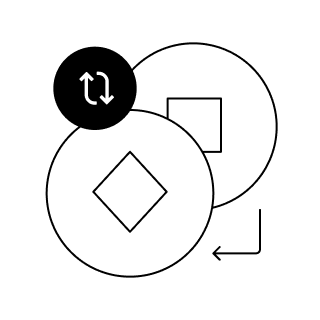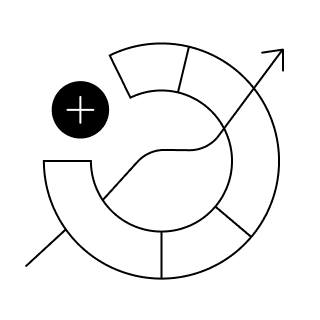What’s Global Dollar (USDG)? How can I buy it?
What is Global Dollar?
Global Dollar (GLD) is a cryptoasset that positions itself as a dollar-linked digital currency designed for global payments and on-chain finance. While “Global Dollar” can sound generic, in this context it refers to a specific stablecoin project focused on providing a price-stable unit (targeting $1 USD) that can move across blockchains and integrate with decentralized finance (DeFi) applications. Its core value proposition is to combine the familiarity and unit-of-account stability of the U.S. dollar with the programmability, borderless transferability, and settlement finality of public blockchain infrastructure.
The project’s stated goals typically include:
- Reducing friction in cross-border payments and remittances
- Offering a stable medium of exchange for on-chain commerce
- Providing a low-volatility base asset for DeFi, trading, and treasury management
- Enhancing transparency and auditability compared to traditional e-money rails
Note: Because “Global Dollar” is a name that could be used by multiple initiatives or tokens, investors and users should verify contract addresses, issuing entities, and attestations on the project’s official website and reputable data providers before transacting.
How does Global Dollar work? The tech that powers it
Most dollar-pegged stablecoins, including those branded around a “global” use case, rely on one of three broad stabilization mechanisms. Global Dollar’s technical architecture typically draws from one or a combination of the following patterns:
- Fiat-backed (custodial) model
- Peg mechanism: For every 1 GLD issued, there is purportedly approximately 1 USD (or cash-equivalent assets) held in reserve by a regulated custodian or trust structure.
- Issuance and redemption: Authorized users can mint GLD by depositing USD and redeem GLD for USD at par, creating an arbitrage channel that keeps market price near $1.
- Transparency: Periodic attestations or audits by third-party accounting firms, plus on-chain supply transparency.
- Tech stack: Smart contracts on one or more blockchains (e.g., Ethereum, Avalanche, Polygon, etc.) manage token balances, freezes (if applicable), and upgrades. Off-chain systems handle KYC/AML, banking rails, and treasury operations.
- Overcollateralized crypto-backed model
- Peg mechanism: GLD may be minted against overcollateralized crypto reserves (e.g., ETH, staked ETH, tokenized treasuries) managed by smart contracts.
- Stability tools: Interest rates, stability fees, and liquidation mechanisms maintain solvency and peg stability.
- Transparency: Full on-chain visibility of collateral and liabilities; risk parameters govern health factors and liquidation thresholds.
- Tech stack: Smart contracts orchestrate vaults, oracle feeds, liquidations, and governance decisions. Oracles (e.g., Chainlink) provide USD price feeds.
- Hybrid / RWA-backed model
- Peg mechanism: A mix of fiat reserves, short-term U.S. Treasuries, and money market instruments tokenized as real-world assets (RWAs) back the supply.
- Yield handling: Reserve yield may be retained by the issuer, shared with token holders via wrappers, or routed to a protocol treasury, depending on design and regulatory constraints.
- Compliance and attestations: Regular disclosures about asset composition, duration, and counterparties.
Bridging and multichain support
- To achieve global reach, Global Dollar often operates across multiple chains via native deployments or canonical bridges. Some designs adopt “lock-and-mint” bridging where GLD locked on Chain A mints a representation on Chain B, while others issue natively per chain.
- Security considerations: Preferably uses audited canonical bridges or native issuance per chain to minimize bridge risk.
Smart contract design and security
- Upgradability: Proxy patterns (e.g., OpenZeppelin) allow administering upgrades to fix bugs or add features, often gated by a multisig or on-chain governance.
- Freeze/blacklist functions: Many fiat-backed stablecoins implement compliance functions. Users should review documentation to understand permissions and governance checks.
- Audits: Reputable security firms should audit the GLD token contracts and related bridge or issuance modules. Public audit reports and bug bounty programs are positive signals.
Data and transparency
- Real-time supply dashboards: On-chain explorers and the issuer’s website should publish supply, chains supported, and contract addresses.
- Reserve attestations: If fiat- or RWA-backed, monthly attestations by a recognized accounting firm increase trust.
- Oracle usage: Reliable price oracles reduce risk for DeFi integrations that reference GLD’s price.
What makes Global Dollar unique?
- Global-first distribution: Emphasis on cross-border availability, on-ramps/off-ramps across multiple regions, and partnerships with payment processors and fintechs can differentiate GLD from incumbent stablecoins in local accessibility and FX conversion paths.
- Multichain native strategy: If GLD issues natively on several networks rather than relying heavily on third-party bridges, it can reduce bridge risk and improve liquidity consistency.
- Enhanced transparency: Frequent reserve attestations, segregated client accounts, and clear disclosure about banking partners and RWA composition build trust—especially in jurisdictions with stringent e-money rules.
- Compliance-forward architecture: Granular compliance tooling (e.g., allowlists for institutions, travel rule integrations) can ease enterprise and fintech adoption while still permitting open on-chain transfers where legally permissible.
- Developer tooling and integrations: SDKs, fiat on-ramps, and plug-and-play settlement APIs help wallets, exchanges, and merchants integrate GLD faster, improving network effects.
Note: These differentiators should be verified against the project’s official documentation, audits, and third-party research before relying on them.
Global Dollar price history and value: A comprehensive overview
As a dollar-pegged stablecoin, GLD’s intended behavior is to trade close to $1. Key concepts for evaluating historical performance:
- Peg stability: Assess how tightly GLD has tracked $1 across centralized exchanges, DEXs, and different chains. Look for episodes of deviation during market stress.
- Liquidity depth: Examine order book depth and DEX liquidity pools (e.g., GLD/USDC, GLD/USDT, GLD/ETH) to gauge slippage for meaningful trade sizes.
- Reserve growth vs. supply: For fiat/RWA-backed models, increases in circulating supply should correspond with reserve growth. Regular attestations can confirm alignment.
- Depeg incidents: Investigate any reported redemptions pauses, banking partner disruptions, or smart contract issues that affected price stability.
- Integration footprint: Stablecoins with more exchange listings, L2 presence, and DeFi integrations tend to hold tighter pegs due to broader arbitrage channels and utility.
Because stablecoins are designed to be stable, “price history” is primarily about measuring deviations from $1, redemption efficiency, and liquidity over time, rather than capital appreciation.
Is now a good time to invest in Global Dollar?
Whether GLD is appropriate depends on your objective:
- For stability and settlement: If you need a dollar-denominated on-chain asset for payments, remittances, or as a trading base, a well-run stablecoin like GLD can be suitable.
- For yield strategies: GLD can be paired in DeFi for liquidity provision, lending, or basis trades. Assess smart contract risk, counterparty risk, and whether yields depend on token incentives.
- For directional returns: Stablecoins are not designed for price appreciation. If you seek upside exposure, consider other assets; GLD’s role is typically capital preservation and frictionless settlement.
Due diligence checklist:
- Verify the official contracts and supported chains via the project’s website and reputable aggregators (CoinGecko, CoinMarketCap).
- Review reserve attestations or on-chain collateral dashboards; confirm auditor reputation and frequency of reports.
- Examine legal structure: issuing entity jurisdiction, licensing, terms and conditions, redemption policies, and potential freeze/blacklist powers.
- Check smart contract audits, bug bounty programs, and governance documentation.
- Evaluate liquidity across the venues you use and the availability of fiat on/off-ramps in your region.
Risk factors:
- Counterparty and banking risk (for fiat-backed models)
- Smart contract and bridge risk (for multichain deployments)
- Regulatory actions that could affect issuance, redemption, or compliance features
- Market liquidity risk during stress events
Bottom line: GLD can be a practical tool for transacting and preserving nominal value on-chain. It is not an investment for appreciation; rather, it’s a transactional and liquidity instrument. Ensure the particular “Global Dollar” you’re considering has transparent reserves, robust audits, strong liquidity, and clear compliance posture before allocating meaningful funds.
Discover the different ways to buy crypto in the UAE
Create an OKX account
Get verified
Start a trade
Enter an amount
Choose your payment method
Confirm your order
All done
Create an OKX account
Get verified
Start a trade
If Global Dollar isn’t available in the dropdown, purchase any of the available tokens and convert it to USDG.
Place a buy order
Complete your purchase
Receive your USDG
All done
Get the OKX app or Wallet extension
Set up your wallet
Fund your wallet
Find your next purchase
Note:
Tokens with the same symbol can exist on multiple networks or may be forged. Always double-check the contract address and blockchain to avoid interacting with the wrong tokens.
Trade your crypto on OKX DEX
Choose the token you’re paying with (e.g., USDT, ETH, or BNB), enter your desired trading amount, and adjust slippage if needed. Then, confirm and authorize the transaction in your OKX Wallet.
Limit order (optional):
If you’d prefer to set a specific price for your crypto, you can place a limit order in Swap mode.
Enter the limit price and trading amount, then place your order.
Receive your crypto
All done

Make informed decisions


How to get Global Dollar for free
See what you can do with your crypto
How to buy Global Dollar (USDG) FAQ
Disclaimer
You are viewing content that has been summarized by AI. Please be aware that the information provided may not be accurate, complete, or up-to-date. This information is not (i) investment advice or an investment recommendation, (ii) an offer, solicitation, or inducement to buy, sell or hold digital assets, or (iii) financial, accounting, legal or tax advice. Digital assets are subject to market volatility, involve a high degree of risk, and can lose value. You should carefully consider whether trading or holding digital assets is suitable for you in light of your financial condition and risk tolerance. Please consult your legal/tax/investment professional for questions about your specific circumstances.














